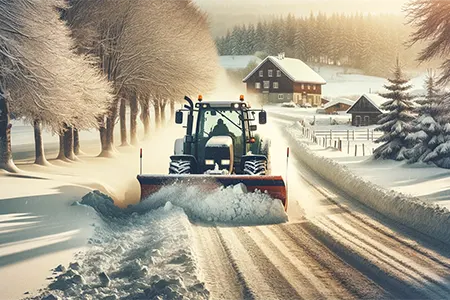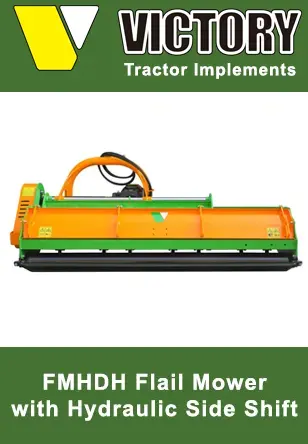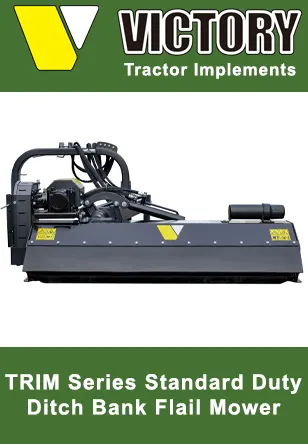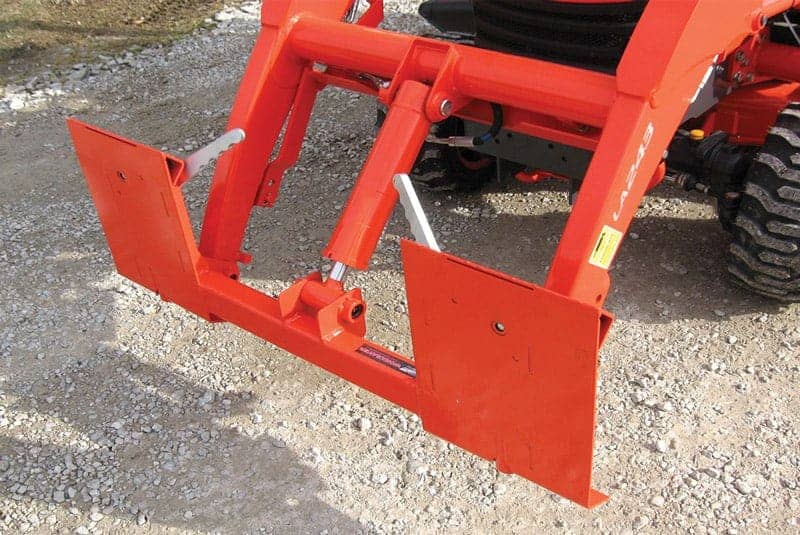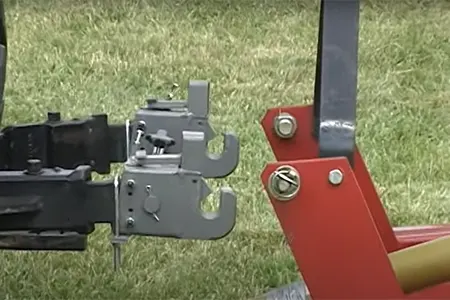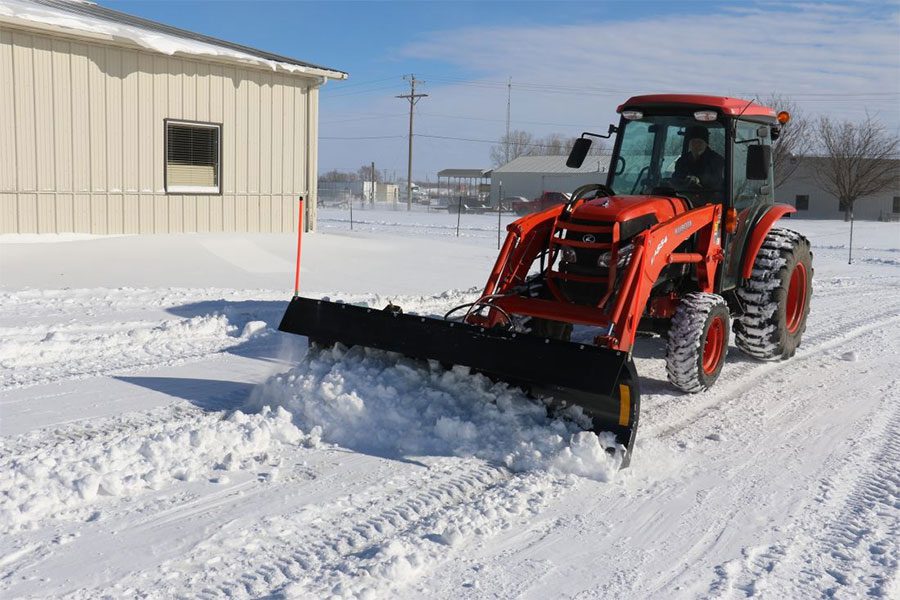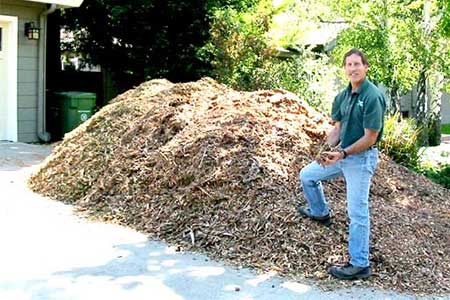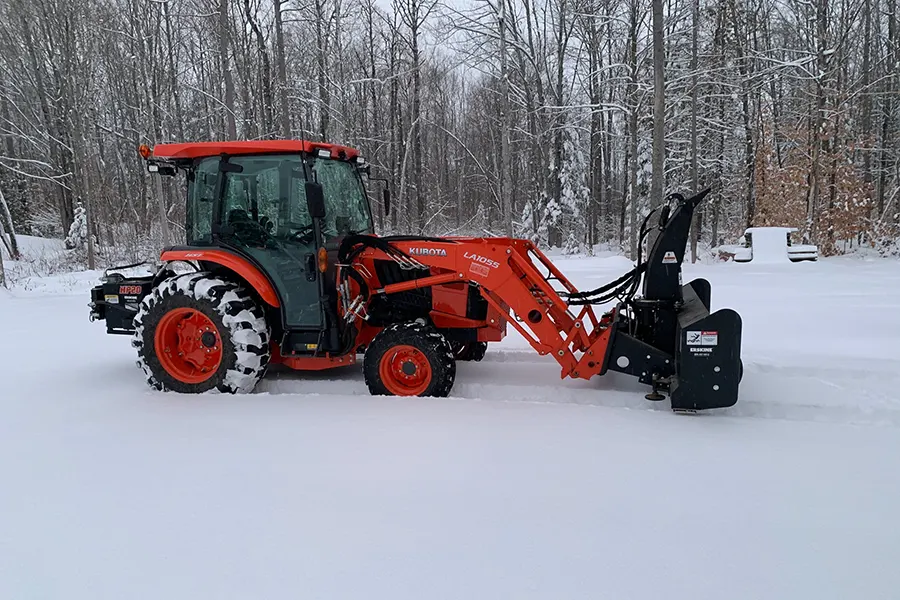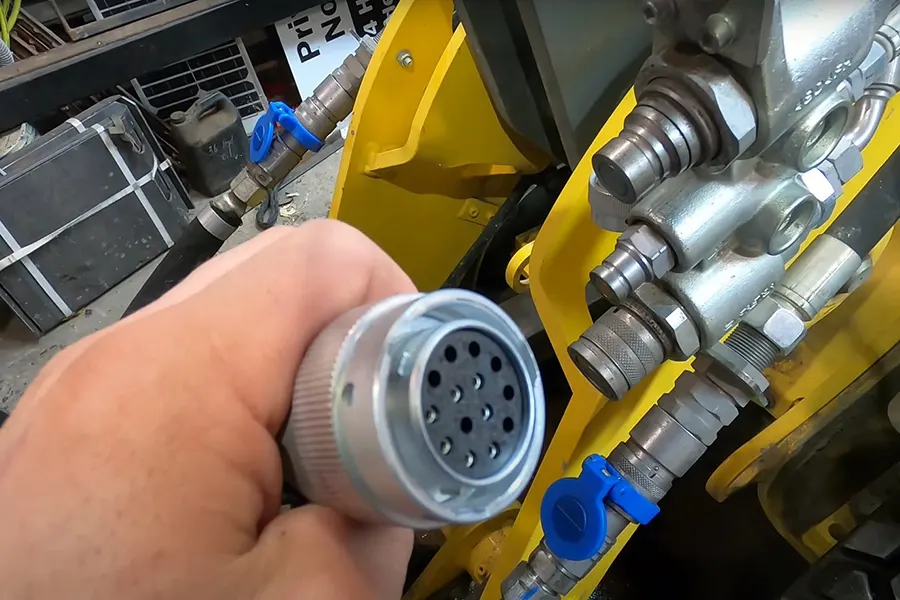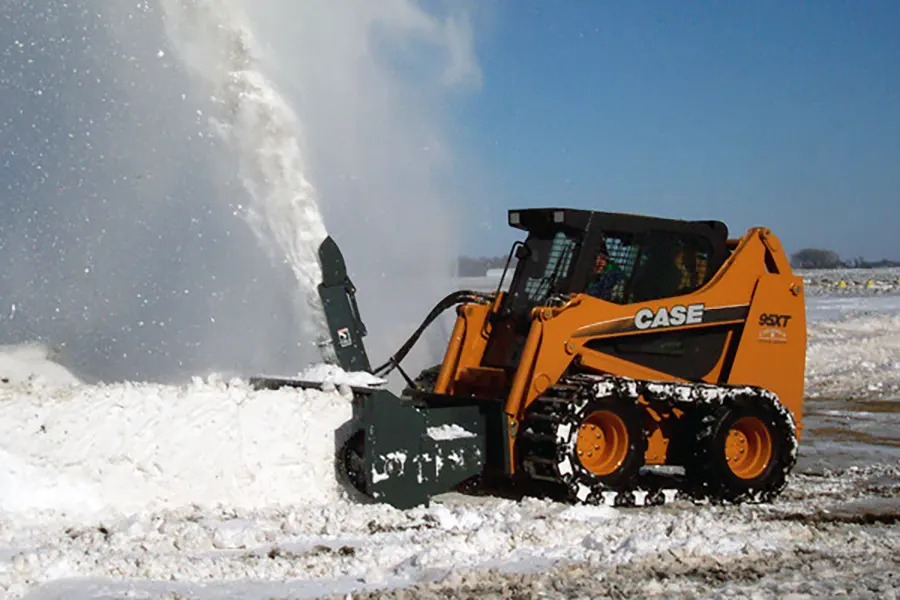Introduction
As winter sets in, ensuring your tractor is prepared for snow removal is crucial. This guide provides detailed steps for winter tractor maintenance, focusing on keeping your tractor in peak condition for the challenging task of snow removal.
Key Takeaways
| Topic | Description |
|---|---|
| Maintenance Essentials | Comprehensive care of fluids, battery, tires, and heating systems. |
| Snow Removal Equipment | Choosing the right plows and blowers based on tractor specs. |
| Operational Safety | Tips for safe and efficient snow removal operations. |
| Post-Use Care | Proper cleaning and storage techniques. |
Essential Winter Tractor Maintenance
Fluids and Lubricants
- Antifreeze Check: Ensure antifreeze is appropriate for the lowest expected temperatures.
- Engine Oil: Use winter-grade oil to facilitate smooth engine start-up in cold conditions.
Battery Maintenance
- Battery Health: Cold weather can reduce battery efficiency. Check for corrosion and ensure it holds charge.
- Connection Check: Ensure all battery connections are tight and free of corrosion.
Tire Inspection
- Air Pressure: Cold air can reduce tire pressure. Keep tires properly inflated for optimal traction.
- Tread Depth: Check for adequate tread to navigate snowy and icy surfaces safely.
Heating System
- Functionality Check: Ensure the cab’s heating system works effectively for operator comfort and safety.
- Defroster Efficiency: Verify the defroster is working well to maintain clear visibility.
Selecting Snow Removal Equipment

Snow Plows
- Size Consideration: Larger plows require more horsepower. Match the plow size to your tractor’s capabilities.
- Mounting and Compatibility: Ensure the plow mounts properly to your tractor. Front-mounted options are often preferred for ease of use.
Comparison Table: Snow Plows for Tractors
This table focuses specifically on snow plows, outlining their key features and suitability based on tractor horsepower requirements.
| Product Type | Model | Working Width | Tractor HP Requirement | Features | Product Link |
|---|---|---|---|---|---|
| Snow Plow | 70″ SS-SP-180 | 70 inches | 35-60 HP | Front-mounted, suitable for smaller properties | 70″ SS-SP-180 Snow Plow |
| Snow Plow | 78″ SS-SP-200 | 78 inches | 40-65 HP | Front-mounted, ideal for medium-sized areas | 78″ SS-SP-200 Snow Plow |
| Snow Plow | 86″ SS-SP-220 | 86 inches | 45-70 HP | Front-mounted, great for larger estates | 86″ SS-SP-220 Snow Plow |
| Snow Plow | 94″ SS-SP-240 | 94 inches | 50-75 HP | Front-mounted, offers extensive snow removal | 94″ SS-SP-240 Snow Plow |
Snow Blowers
- Horsepower Requirements: Check the horsepower requirement of the snow blower to ensure compatibility with your tractor.
- Hydraulic Flow: Ensure your flow rate (GPM) is sufficient to power the machine.
- Working Width: Choose a blower with an appropriate working width for the areas you need to clear.
Comparison Table: Snow Blowers for Tractors
This table is dedicated to snow blowers, highlighting their specifications and compatibility with different tractor models.
| Product Type | Model | Working Width | Tractor HP Requirement | Hydraulic Flow (GPM) | Features | Product Link |
|---|---|---|---|---|---|---|
| Snow Blower | 72″ SS-SB-72H | 72 inches | 40-90 HP | 22-32 GPM | Hydraulic chute, front-mounted | 72″ SS-SB-72H Snow Blower |
| Snow Blower | 84″ SS-SB-84H | 84 inches | 50-100 HP | 22-32 GPM | Hydraulic chute, designed for efficiency | 84″ SS-SB-84H Snow Blower |
Understanding Hydraulic Flow Requirements for Snow Blowers
When selecting a snow blower for your tractor, one crucial aspect to consider is the hydraulic flow requirement. This section explains the importance of hydraulic flow and how to match it with your tractor’s capabilities.
Importance of Hydraulic Flow in Snow Blowers
- Functionality: Hydraulic flow refers to the rate at which hydraulic fluid moves through the system. In snow blowers, it powers the mechanisms that throw the snow, such as the auger and impeller.
- Performance: Adequate hydraulic flow ensures the snow blower operates efficiently and effectively, especially in heavy snow conditions.
Matching Hydraulic Flow with Tractor Specifications
- Check Tractor’s Capability: Before selecting a snow blower, determine your tractor’s hydraulic flow capacity, which is usually measured in gallons per minute (GPM).
- Snow Blower Requirements: Compare this with the hydraulic flow requirement of the snow blower. For instance, the 72″ SS-SB-72H Snow Blower requires a flow rate within a specific range (22-32 GPM) to function optimally.
Consequences of Inadequate Hydraulic Flow
- Reduced Efficiency: If the tractor’s hydraulic flow is lower than what the snow blower requires, it may lead to reduced throwing distance and speed, affecting snow removal efficiency.
- Potential Damage: Consistently operating a snow blower with inadequate hydraulic flow can strain the system, potentially leading to damage or failure.
By understanding and adhering to hydraulic flow requirements, you can ensure that your snow blower operates at its best, providing efficient and reliable snow removal throughout the winter.
Safety and Operational Tips
Visibility and Inspection
- Clearing Path: Regularly remove snow and ice from the tractor’s windows and lights.
- Equipment Check: Post-use inspections can identify potential issues early.
Operator Training
- Understanding Controls: Familiarize yourself with the tractor and snow removal equipment controls.
- Safety Protocols: Follow all recommended safety guidelines for operating snow removal equipment.
Post-Use Care and Maintenance
Cleaning and Storage
- Rust Prevention: Thoroughly clean your tractor and snow removal tools to prevent rust and corrosion.
- Dry and Covered Storage: Store equipment in a location protected from the elements.
Seasonal Servicing
- Pre-Winter Service: A full service before winter ensures your tractor is ready for the season.
- End-of-Season Maintenance: Post-winter servicing prepares your equipment for storage or other seasonal work.
Conclusion
Proper winter maintenance of your tractor and the correct selection of snow removal equipment are fundamental for efficient and safe operation during the snowy months. Regular checks, appropriate equipment choices, and adherence to safety guidelines will ensure your tractor is well-prepared for winter challenges.
FAQs on Winter Tractor Maintenance and Snow Removal
1. What type of oil should I use in my tractor during winter?
Answer: Use winter-grade oil, such as 5W-30 or 10W-30, which has lower viscosity for easier engine start-up and better lubrication in cold temperatures.
2. How often should I check the antifreeze in my tractor’s radiator?
Answer: Check the antifreeze level and its freezing point before and regularly throughout the winter. It should be suitable for the lowest temperatures in your area.
3. Can I use the same tires for my tractor in winter as in other seasons?
Answer: Yes, but ensure they have adequate tread depth. Consider using tire chains for enhanced traction on snowy and icy surfaces.
4. What are the key considerations when choosing a snow plow or blower for my tractor?
Answer: Key factors include the equipment’s working width, compatibility with your tractor’s horsepower, and hydraulic flow requirements. Matching the hydraulic flow capacity of your tractor with the requirements of the snow removal equipment is crucial for optimal performance.
5. How should I store my snow removal equipment when not in use?
Answer: Clean the equipment to remove snow, ice, and debris, and store it in a dry, covered area to prevent rust and corrosion. Post-season servicing is recommended for longevity.

Victory Tractor Implements is proud to offer a wide range of products including flail mowers, wood chippers, rotary tillers, and backhoes, all designed to be connected directly to your tractor’s PTO for maximum efficiency and performance. In addition, we also offer winter equipment such as snow plows and snow blowers, designed for use with skid steers.
We source all of our equipment directly from the manufacturer and pass the savings on to our customers. As always, the team is standing by to answer any questions to assist with your decision. Victory support can be reached directly at (562) 534-8182 or sales@etractorimplements.com

